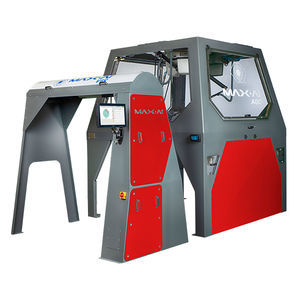
- Medical & Pharmaceutical industry
- Medical industry
- Eco-Spectrum LLC

- Products
- Catalogs
- News & Trends
- Exhibitions
Rubber conveyor belt
Add to favorites
Compare this product
Characteristics
- Other characteristics
- rubber
Description
Conveyor belt - is an integral part of the belt conveyor, which simultaneously performs the functions of load-carrying and traction bodies. At the same time, such a part is both the most expensive and the most short-lived in the conveyor. The most stringent requirements are put forward for its strength and durability.
The tape design has the following layers:
Working rubber lining. The surface over which the load is transported.
Fabric (cable) pads - the frame of the product. The most important element of the tape, which determines its strength and flexibility. The number of such gaskets can be 3-12 pieces.
Rubber gaskets that connect the carcass layers.
Non-working rubber lining.
Also, the tape is equipped with a rubber board, which protects it from delamination and from the ingress of aggressive substances on the main layers.
According to the frame material, conveyor belts are divided into two types:
Rubber-fabric. Contains fabric frame. The fabric can be natural (cotton) or synthetic, with a strength of 55–400 N/mm.
Rubber with metal cables. Made on the basis of a frame made of steel cables. They are designed for conveyors over 300 m long transporting large, heavy loads.
When choosing a conveyor belt, the following parameters should be considered:
width;
thickness;
number of carcass layers;
type of transported cargo;
term of use.
Catalogs
No catalogs are available for this product.
See all of Eco-Spectrum LLC‘s catalogsOther Eco-Spectrum LLC products
WASTE SORTING AND RECYCLING EQUIPMENT
*Prices are pre-tax. They exclude delivery charges and customs duties and do not include additional charges for installation or activation options. Prices are indicative only and may vary by country, with changes to the cost of raw materials and exchange rates.










